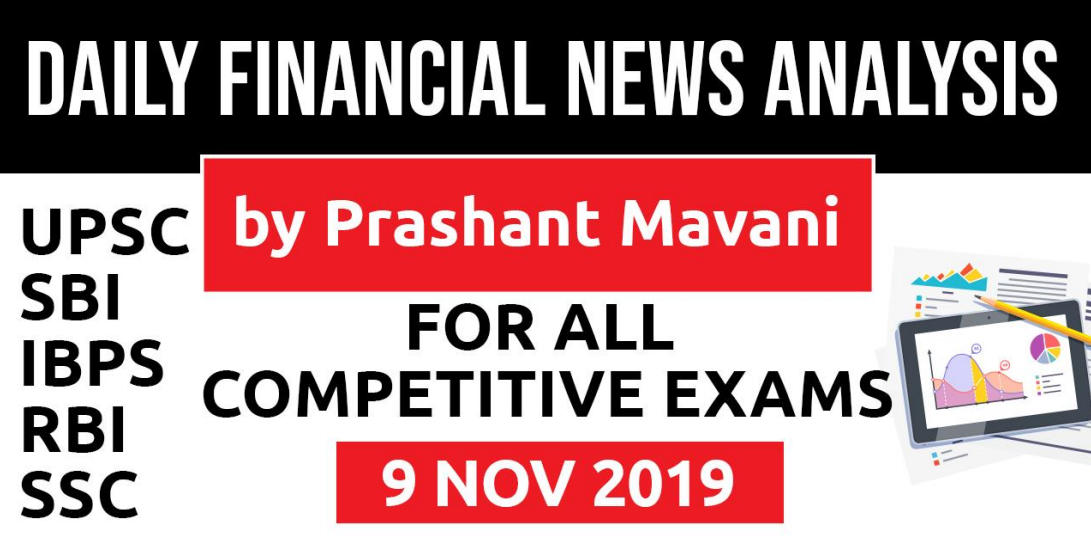Table of Contents
Credit Rating Outlook
- Changed its credit rating outlook on India to “negative” from “stable”
- Citing increasing risks to the country’s economic growth that will remain lower than in the past.
- Government’s policy in effectiveness in addressing economic weakness, which led to an increase in the debt burden from already high levels.
- Moody’s projected a fiscal deficit of 3.7% of gross domestic product (GDP) for the current fiscal against the government’s target of 3.3%, saying slower growth and the surprise corporate-tax cut curb revenue.
- India’s growth outlook got deteriorated sharply in 2019 and credit crunch in banking as well as NBFCs mainly paralysed the corporate sector, mostly in retail businesses, car makers, home sales and heavy industries.
Govt rebuts Moody’s action
- The government on Friday differed with Moody’s assessment of the Indian economy.
- Country’s relative standing remains unaffected and that it’s still one of the world’s fastest-growing major economies.
- The fundamentals of the economy remain quite robust with inflation under check and bond yields low.
- India continues to offer strong prospects of growth in near and medium term.
- Suit-boot ki sarkar is gone
- Impressive 27% jump in FDI
- Moody’s assessment was out of sync with reality.
- Fitch Ratings and S&P Global Ratings still hold India’s outlook as stable.
- IMF in its latest World Economic Outlook has stated that Indian economy is set to grow at 6.1 per cent in 2019, picking up to 7 per cent in 2020.
- India’s potential growth rate remains unchanged, assessment by IMF and other multilateral organisations continue to underline a positive outlook on India.
NEFT free of charge
- From January 2020
- RBI asked banks not to charge savings bank account customers for online transactions in the NEFT.
- To promote digital transactions.
- There are two systems of inter bank transfer – RTGS and NEFT – and both these systems are maintained by RBI.
- Fund transfers in NEFT transaction sare settled in batches as opposed to the continuous, individual settlement in RTGS.
- The efforts such as RTGS and NEFT have resulted in a rapid growth in the retail digital payment systems.
- The RBI had earlier proposed to make the service available on a 24×7 basis from December 2019.
- NEFT transaction up to ₹10,000, will invite ₹2 plus GST charges. For a transaction above ₹2 lakh via NEFT, SBI will charge ₹20 plus GST.
- For RTGS transfer between ₹2 lakh to₹5 lakh, a customer must pay ₹20 plus GST.
- RTGS transfer above ₹5 lakh will be charged ₹40 plus GST.
Steel Scrap Recycling Policy
- Aim: to reduce imports, conserve resources and save energy.
- To ensure quality scrap for the steel industry
- The country’s steel scrap imports were valued at Rs 24,500 crore in 2017-18, while the deficit was to the tune of 7 MT.
- National Steel Policy 2017 aims to develop a globally competitive steel industry by creating 300 MT per annum steel production capacity by 2030 with a contribution of 35-40 per cent from EAF/IF (Electric Arc Furnace/Induction Furnace) route.
- It said the scrap policy will ensure processing and recycling of products in an organised, safe and environment friendly manner.
- Besides evolving a responsive ecosystem and producing high quality ferrous scrap for quality steel production minimising the dependency on imports.
- The statement said the policy envisages aframework to facilitate and promote establishment of metal scrapping centres in India.
- It will ensure scientific processing and recycling of ferrous scrap generated from various sources and a variety of products.
- The policy is based on “6Rs principles of Reduce, Reuse, Recycle, Recover, Redesign and Re-manufacture through scientific handling, processing and disposal of all types of recyclable scraps including non-ferrous scraps, through authorized centers / facility” .
- The gap between demand and supply of scrap can be reduced in the future and the country may be self-sufficient by 2030, it added.
Download Free PDF






















 WhatsApp
WhatsApp